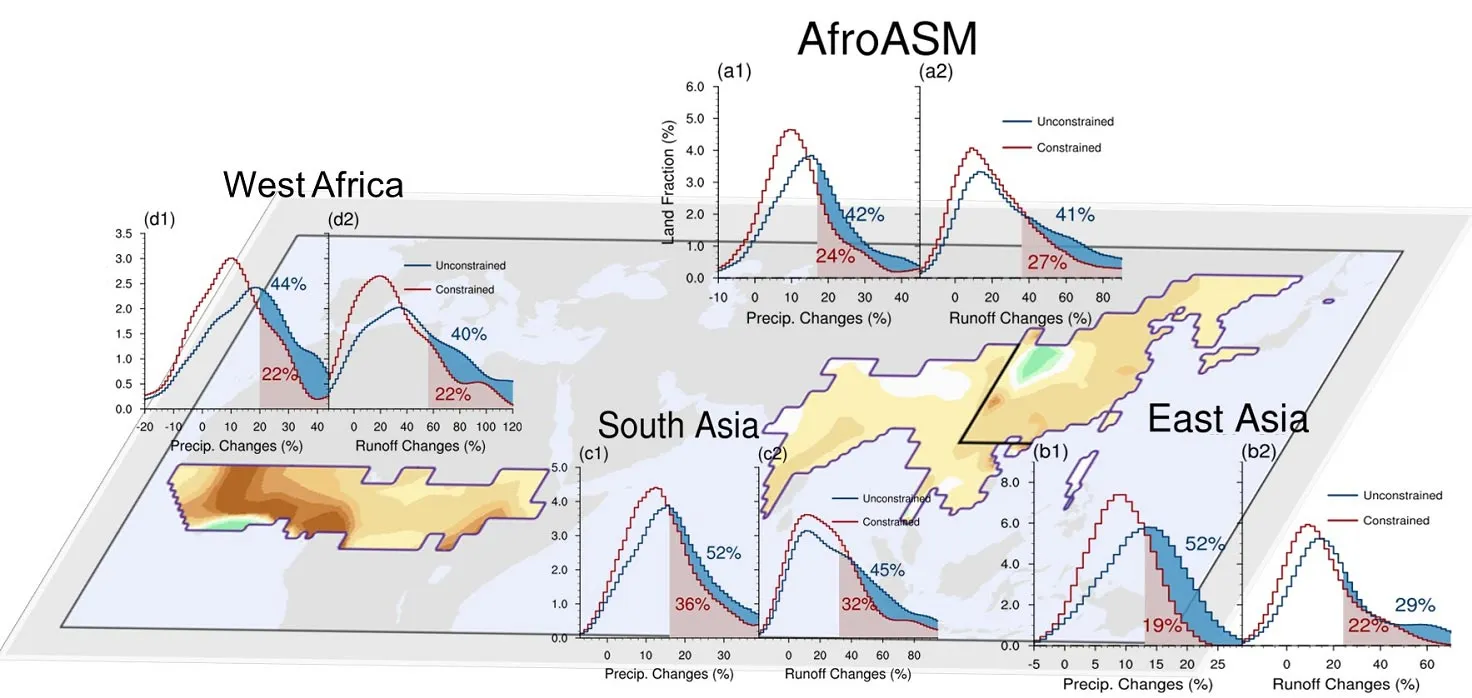Climate prediction is essential for adaptation and mitigation planning. The output of the latest round of coupled model mutual comparison project phase 6 (cmip6) has been widely used in climate prediction. However, a subset of the model is "too hot", and the predicted warming caused by greenhouse gases is excessive. It was not clear how to solve the "thermal model" problem on a regional scale.

According to a research team of the Institute of Atmospheric Physics (IAP) of the Chinese Academy of Sciences, the latest cmip6 climate model tends to overestimate the rainfall and runoff of the future Asian African summer monsoon (afroasm) because of the deviation of the current heating model. However, by constraining the bias, the increase in rainfall is 70% of the original prediction.
The study will be published in nature news on May 10.
It is reported that afroasm includes West African monsoon, South Asian monsoon and East Asian monsoon.
The research team identified the main variation patterns of cmip6 model in predicting the future changes of afroasm rainfall. They found that the uncertainty of the prediction was related to the deviation of today's interhemispheric thermal contrast (ITC). Because the large-scale monsoon circulation is driven by ITC caused by humid static energy gradient, models with large ITC trend in the past 30 years tend to predict more precipitation increase.
Since most cmip6 models tend to overestimate the current ITC trend, the team corrected the original prediction by designing an emerging constraint technology. In the constrained prediction, the increase of precipitation is 70% of the set average of cmip6 model. The land area with a significant increase in precipitation is ~ 57% of the original prediction.
In this regard, the research team further extended its analysis to runoff, which is a mirror of potential water supply. In the constrained forecast, ~ 27% of the land area in the non Amazon region will witness a significant increase in potential water supply, which is ~ 66% of the original forecast. Regionally, the influence of observation constraints is most obvious in the West African monsoon region, where the land area increased by available water accounts for ~ 55% of the original prediction.
This study provides a solution to the problem of "thermal model" in the region. The burst control technology reported in the study is based on the physical connection between a simulated but observable variable in the current era and a predictive variable in the future climate system.
"This technique is useful for correcting the bias of the cmip6 model and ultimately improves the reliability of rainfall prediction in the Asian African Latin American summer monsoon region. The basic physical mechanism is to balance the impact of climate sensitivity on the historical and future inter hemispheric thermal contrast," said Dr. Zhou Tianjun from IAP, who is the corresponding author of the study.
"A small increase in precipitation and runoff may reduce flood risk and pose a challenge to future water resources management," said Chen Ziming, the first author of the study and a doctoral student at the University of the Chinese Academy of Sciences